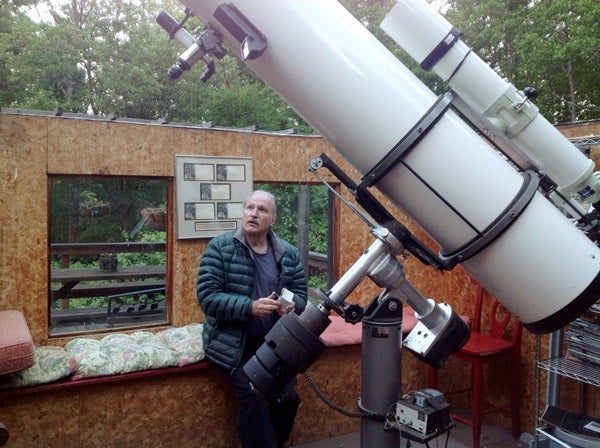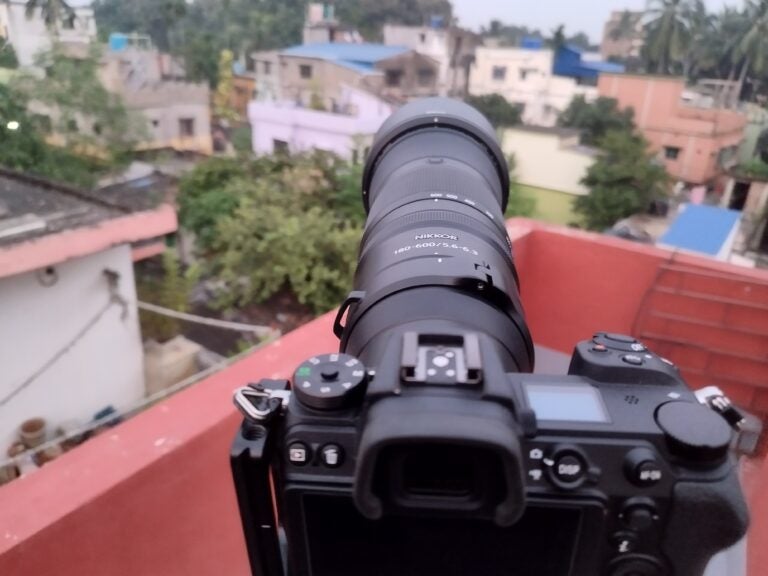Oddly enough, this page has never offered equipment advice. Let’s do it now. But before I pretend to be an authority, let me briefly explain my background. It has a familiar beginning: I became an enthusiastic observer at age 12, thanks to a 60mm refractor I received for Christmas. My obsession drove me to memorize every star that had a name or Greek letter, along with their distances and spectral classes. Studying astronomy at a university provided sufficient credentials to teach astrophysics at Marymount Manhattan College in New York City, even though I’d never earned a doctorate.
Nor did I ever grind a single telescope mirror. Nonetheless, optics so fascinated me that when the cranky old telescope maker John Dobson came to be my houseguest 15 years ago, it was unforgettable. Not only did he show me a quick way to collimate my primary mirror, he also regaled me with boasts about his lifetime of poverty.
What are my credentials? I own all three basic telescope types. I have an original Celestron sandcast C8 and a beloved C5 that is truly portable and tracks the stars while powered only by a 9-volt battery. In 1982, I built a 12-by-18-foot (3.7 by 5.5 meters) motorized roll-off-roof observatory to house my new Meade research-grade 12.5-inch f/6 reflector. Its rotating tube on bearings was one of the universe’s great ideas, because it allowed the user to position the eyepiece at any convenient location. Gone were the times when you’d have to possess wings and somehow be positioned above the instrument, 8 feet (2.4 m) above the ground, to look through it. I still use that observatory today.
When I acquired a 5-inch Takahashi refractor, I first piggybacked it on the 12.5-incher. But after moving to a darker location in 1998, I put up a second observatory near my home, this one with a dome. I loved the original observatory’s roll-off-roof design, but there’s something undeniably cool about a dome.
So cool, in fact, that in recent years, several companies have offered domes at affordable prices. I chose an Explora-Dome 10-by-10-foot (3 by 3 m) metal building with an 8-foot (2.4 m) motorized dome, inside which I installed the Takahashi apochromat on a bulletproof Temma mount.
It’s hard to get used to looking through a slit and seeing just a little slice of sky, so I still think the roll-off is the best way to go. Nonetheless, the dome works great. If you do buy one, it’s cheapest to assemble it yourself. But as someone who loathes putting together Ikea furniture, I thought the company’s offer to send two guys to do all the assembling for a mere $600 was the best deal ever.
So, based on my half-century of experience with scopes and places to use them, which type of telescope is best? Spoiler alert: You’ve heard all this before. If you need to carry it to a dark site, it’s hard to beat a Schmidt–Cassegrain for portability. If you want the obvious benefits of large aperture, then Newtonian reflectors deliver the biggest bang. If you’re a lunar and planetary aficionado and have the money, then the latest crop of apochromatic refractors is amazing. Plus, they can give ultra-low-power views of deep-space objects so you can get the entire Andromeda Galaxy, Pleiades, or Double Cluster in Perseus in a single field, a wonderful experience.
The old cliché is still true: No one telescope type can confer every advantage. Being in the astro-realm means living in a compromise dimension. This trade-off is epitomized for those living in a bright city, where a private observatory can be a distant dream.
So, consider living under dark skies from the get-go. Rural areas need teachers, nurses, and tax accountants. Granted, the pizza will probably be bad. Where I live, there is no mail delivery or cell service. And forget nightlife. But in truly rural regions, your backyard routinely hosts a thrilling Milky Way.
And in such places, the wordy debates about equipment largely vanish, silently dissolving into the overhead star clouds.










